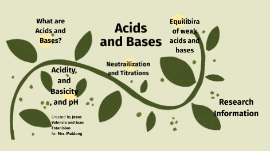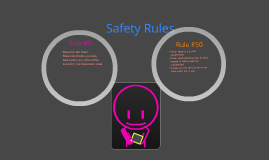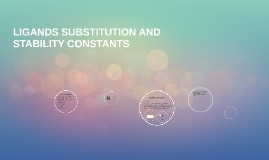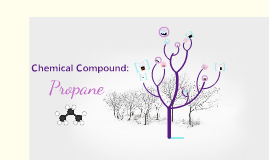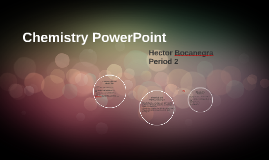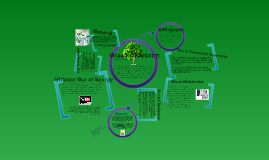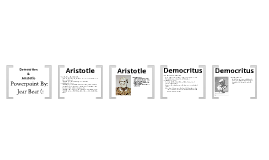Chemistry Powerpoint
Transcript: Created by Jesus Valencia and Juan Estanislao for Mrs. Muldong Research Information and Bases Acids What are Acids and Bases? What are Acids and Bases? Acids Acids You can recognize acid in liquids by their tart, sour, or sharp taste. Many other acids are highly caustic and should not be put to the taste test. Strong Acids Strong Acids A Strong Acid is an acid that ionizes completely in a solvent. Examples of a Strong Acid are the following: Hydochloric Acid (HCL), Hydrobromic acid (HBr), Hydriodic acid (HI), Nitric acid (HNO3), Sulfuric acid, (H2SO4), Perchloric acid (HCL04), Periodic acid (HL04). Weak Acids Weak Acids Weak Acids are acids that releases few hydrogen ions in a aqueous solution. Examples of Weak Acids are the following: Acetic acid (CH3COOH), Hydrocyanic acid (HCN), Hydroflouric acid (HF), Nitrous acid (HNO2), Sulfurous acid (H2SO3), Hypochlorous acid (HOCL), Phosphoric acid (H3PO4). Bases Bases Unlike acids, which are usually liquids or gases, many common bases are solids. Solutions of bases are slippery to the touch, but touching bases is an unsafe way to identify them. Strong Bases Strong Bases Strong Bases are bases that ionizes completely in a solvent. Examples for Strong Bases are the following: Sodium hydroxide (NaOH), Potassium hyrdroxide (KOH), Calcium hydroxide (Ca(OH)2, Barium hydroxide (Ba(OH)2), and Sodium Phosphate (Na3PO4). Weak Bases Weak Bases Weak Bases are bases that releases few hydroxide ions in aqueous solutions. Examples of Weak Bases are the following: Ammonia (NH3), Sodium Carbonate (Na2CO3), Potassium Carbonate (K2CO3), Aniline (C6H5NH2), and Trimethylamine (CH3)3N). Acidity, Basicity, and pH Acidity, and Basicity, and pH Water is both an acid and a base. This means that a water molecule can either give or receive a proton. For example when their are a pair of water molecules ---> (H2OCL)+ (H2OCL)---> (H3O) (aq)+ (OH) (aq). A pair of water molecules are in equilibrium with two ions- a hyrdronium ion and a hydroxide ion- in a reaction known as the selfionization of water. Thus, even pure water contains ions. When the concentration of (H3O) goes up, the concentration of (OH) goes down, and vice versa. An equilibrium- a constant expression relates the concentration of species involved in an equilibrium. The relationship for the water equilibrium is simply (H3O+) + (OH-)= Keq. This equilibrium constant is called the self-ionization constant of water. Its so important that it has its own special symbol,Kw. The product of these two ion concentration is always constant. The concentration of hydroxide ions in a solution expresses its bascicity. pH determines how basic or acidic something is. When acidity and basicity are exactly balanced such that the numbers of the (H3O+) and (OH-) ions are equal, we say that the solution is neutral. For an example, pure water is neutral because it contains equal amounts of the two ions. Certain dyes known as indicators, turn different colors in solutions of diferent pH. Neutralization and Titrations Neutrailization and Titrations When a solution has a high (H3O+) concentration, it high enough to react with and dissolve metals. High concentrations of (H3O+) (aq) and (OH-) (aq) cannot co-exist. Most of these ions have reacted with each other in a process known as a neutralization reaction. When solutions of a strong acid and a strong base, having exactly equal amounts of (H2O+) (aq) and (OH-) (aq) ions are mixed, almost all of the hydronium and hydroxide ions react to form water. The reaction is described by the equation: (H3O+) (aq) + (OH-) (aq) ---> (2H20Cl). The game reaction happens regardless of the identities of the strong acid and strong base. After hydrochloric acid neutralizes a solution of sodium hydroxide, the only solutes remaining are (Na+) (aq) and (Cl-) (aq). When the water is evaporated, a small amount of sodium chloride crystals. If an acidic solution is added gradualy to a basic solution, at some point the neutralization reaction ends because the hydroxide ions becomes used up. This process is called equivalence point. The gradual addition of one solution to another to reach an equivalence point is called a Titration. The purpose of a titration is to determine the concentration of an acid or a base. Titrant is used to measure the volume of the alkaline solution. To find the concentration of the solution being titrated, you must of course, already have the concentration of the titrant. A solution whose concentration is already known is called a standard solution. All indicators have a transition cage. In this range the indicator is partly in its basic form. The instand at which the indicator changes color is the end point of the titration. If an appropriate indicator is chosen, the end point and the equivalence point wiil be the same. Equilibria of weak Acids and Bases Equilibira of weak acids and bases Formic acid is a typical Bronstec- lowry acid, able to donate a proton to a base, such as the acetate ion, CH3COO. The name







